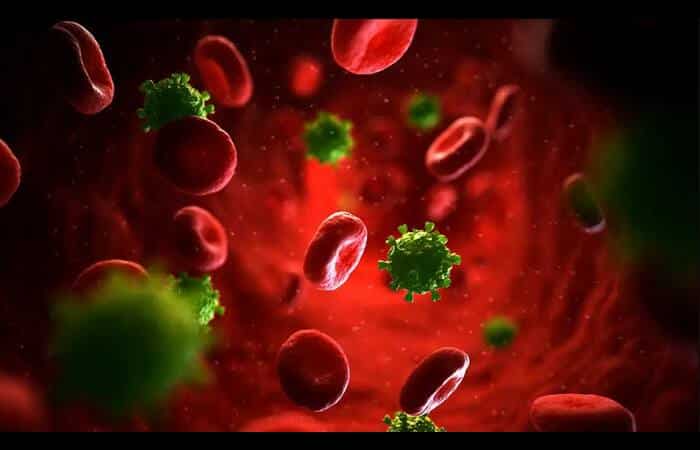What Is HIV?
HIV is a virus that causes AIDs; it is an infection that damages the human immune system. Untreated AIDS affects and kills CD4 cells, a type of immune cell called T cells.
After some time, as it kills more CD4 cells, the body is bound to develop various types of conditions and tumors in various organs.
In the absence of any treatment, HIV will make the body less willing to protect itself from severe infections, and eventually lead to a fatal stage. From a disease commonly known as acquired immunodeficiency virus (AIDS).
Symptoms Of HIV
As the infection continues to replicate and eliminate the T cells (the cells in your body that help fight microbes), it may promote mild illness or persistent signs and manifestations, for example,
- Fever
- weakness
- Enlarged lymph axons – regularly one of the main indicators of HIV infection
- the runs
- Weight loss
- Oral yeast disease (thrush)
- shingles (herpes zoster)
- Pneumonia
Causes Of HIV
The HIV that causes AIDS disease is belonging to retroviruses. Although HIV infection can be sent in certain fluids that people circulate now and then. It’s also helpful to understand that for any of these fluids to cause contamination, they must interact with a mucous layer (found inside the rectum, vagina, penis, and mouth), damaged tissue, such as a new infection, or be instilled directly into the circulatory system by using a contaminated syringe or blood transfusion.
Ways Of Transmission
HIV is transmitted through organic fluids that include:
- Blood
- Semen
- Vaginal and rectal fluids
- Breast milk
- The infection is not transmitted by air or water, or through easy contact.
Risk Factors Of HIV
Anyone of all ages, races, and gender can be infected with AIDS. In any case, you are at risk of contracting HIV/AIDS if:
Having unprotected sex: Use new latex or polyurethane condom each time you have sexual relations. Butt-centered sex is more dangerous than vaginal sex. Your risk of contracting HIV increases if you have different sexual partners.
You have a sexually transmitted infection: Many STIs result in open bruises on your genitals. These infections act as portals for HIV to enter your body.
Use intravenous medications: Individuals who use intravenous medications regularly share needles. This opens them to drops of other people’s blood.
How HIV Causes Tumors?
As this disease causes immune system destruction, the patient suffering from this disease will interact with all diseases such as flu fever, and even cancer.
Lymphoma: This malignancy begins in white blood platelets. The most well-known early sign is easy dilation of the lymphatic axons in the neck, armpit, or crotch.
Kaposi’s sarcoma: A growth in vein breaks, Kaposi’s sarcoma generally appears as pink, red, or purple lesions on the skin and mouth. Infections may appear dark brown or dull brown in people with dull skin. Kaposi’s sarcoma can also affect internal organs, including the digestive system and the lungs.
Diagnosis of HIV
- Specialists analyze HIV in all types of people with a blood or saliva test, even though they can also test a urine test. This test looks for the antibodies that the individual has created to fight the infection. The test usually takes 3 to 12 weeks to distinguish the antibodies (Source).
- Another test looks for HIV antigens, which are substances that infection transmits after transmission. These antigens cause the immune system to start working. HIV creates p24 antigen in the body even before antibodies are formed.
- Neutralization and antigen tests are usually done in laboratories, but there are also home tests that individuals can perform.
How To Cure HIV?
The best treatment for HIV is antiretroviral therapy (ART). This is a combination of a few medicines that are meant to control the scale of infection in your body. Antiretroviral medicines slow the rate at which the infection progresses.
It is much more common for combination prescription drugs to consist of different drug classes than it is for a similar class of drugs. These drugs are known as multi-class combinations or single-disc regimens (STRs).
Individuals infected with HIV should start taking HIV medications as soon as possible. ART cannot cure AIDS, but HIV ART helps HIV-positive individuals to live better life and similarly reduce the risk of AIDS transmission.
Medications For HIV
There is a wide range of classes of antiretroviral drugs used to treat AIDS. The supplier of medical services for an individual with HIV will decide on the best medications for that individual condition.
This choice will depend on:
- Individual viral burden
- Their T cell count
- Their strain of HIV
- The seriousness of their case
The different medications they take to get away from connections between HIV drugs and their different medications
Drug combinations merge different drugs into a single drug structure. These types of pills are usually used to treat individuals who have never taken HIV medications.
The accompanying mixture contains only a PI and a CYPA3A inhibitor:
- Atazanavir and cobicistat (Evotase)
- darunavir and cobicistat (Prizcopix)
- lopinavir and ritonavir (Kaletra)
- Abacavir, lamivudine, and zidovudine (Trezivir)
- Abacavir and lamivudine (Epzicom)
- emtricitabine and tenofovir fenamide fumarate (Descovy)
- emtricitabine and tenofovir disoproxil fumarate (Truvada)
- lamivudine and tenofovir disoproxil fumarate (Simdo, Temexis)
- lamivudine and zidovudine (Combivir)
Closing note
Because AIDS fused itself into the DNA of cells, it is a long-standing condition and there is currently no drug that removes HIV from the body, although many researchers are trying to find one.

